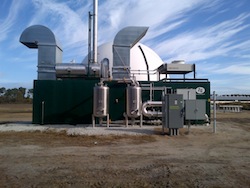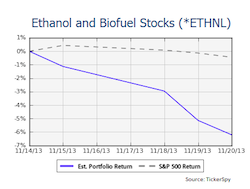 A by-product of biodiesel could become a green fuel for maritime operations. This article from Seatrade Global says glycerol, or better known as glycerine, is being looked at for use in shore-side operations.
A by-product of biodiesel could become a green fuel for maritime operations. This article from Seatrade Global says glycerol, or better known as glycerine, is being looked at for use in shore-side operations.
If adopted by shipping, glycerol could potentially match the emissions-saving properties of low-sulphur marine diesel or even liquid natural gas at a fraction of the cost of dirtiest bottom-of-the-barrel fuel oil, and would be available in plentiful supply. Now, the Glycerine Fuel for Engines and Marine Sustainability (GLEAMS) project, a joint programme involving Lloyd’s Register, Aquafuel Research, Gardline Marine Sciences, Redwing Environmental and Marine South East, is moving to facilitate exactly that.
Currently, the infrastructure is simply not available for a quick adoption of the new fuel. However, there is an extremely strong case if distribution can be set up. David Rea, project manager at Marine South East, tells Seatrade: “Glycerol represents a more thermally efficient combustion process than marine diesel oil (MDO) or heavy fuel oil (HFO), and therefore the basic carbon reduction calculation is improved. Cleaned fuel-grade glycerol will be 2-3% of the carbon level of MDO or HFO.”
Glycerol is also seen as being more stable than many fossil fuels, as it’s almost impossible to ignite accidentally, water soluble and non-toxic. And that could make storing the fuel and retrofitting the machinery and infrastructure much easier.












